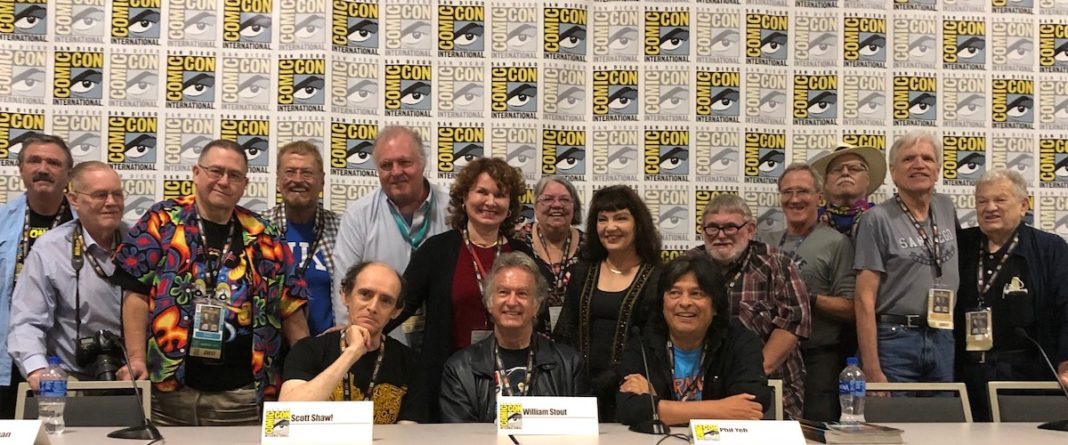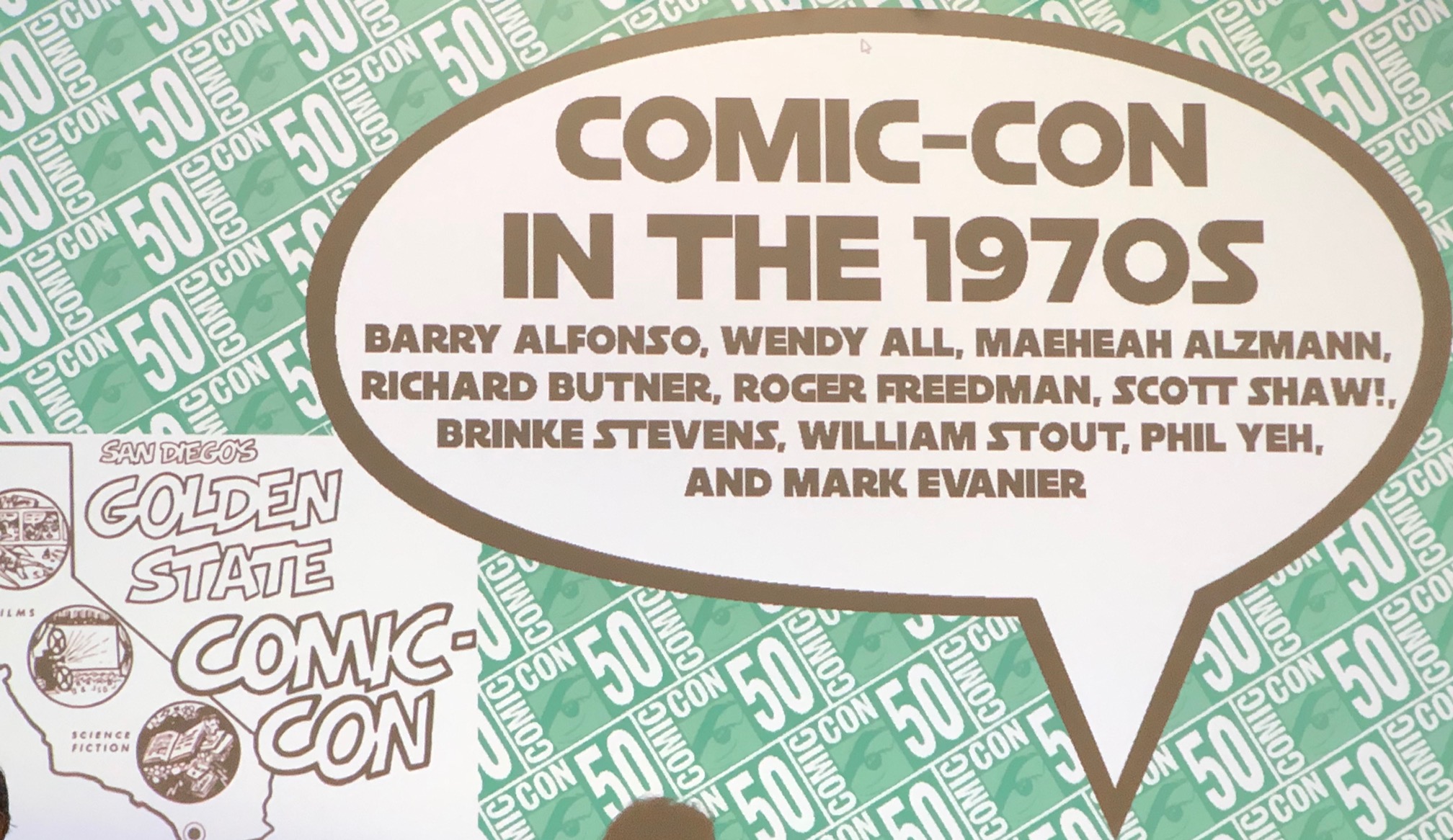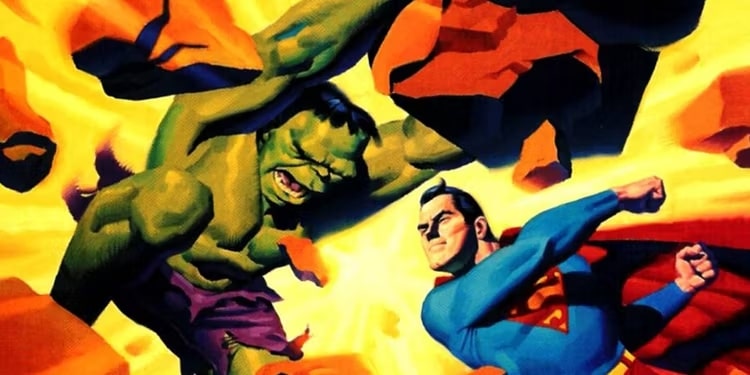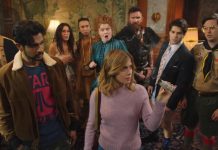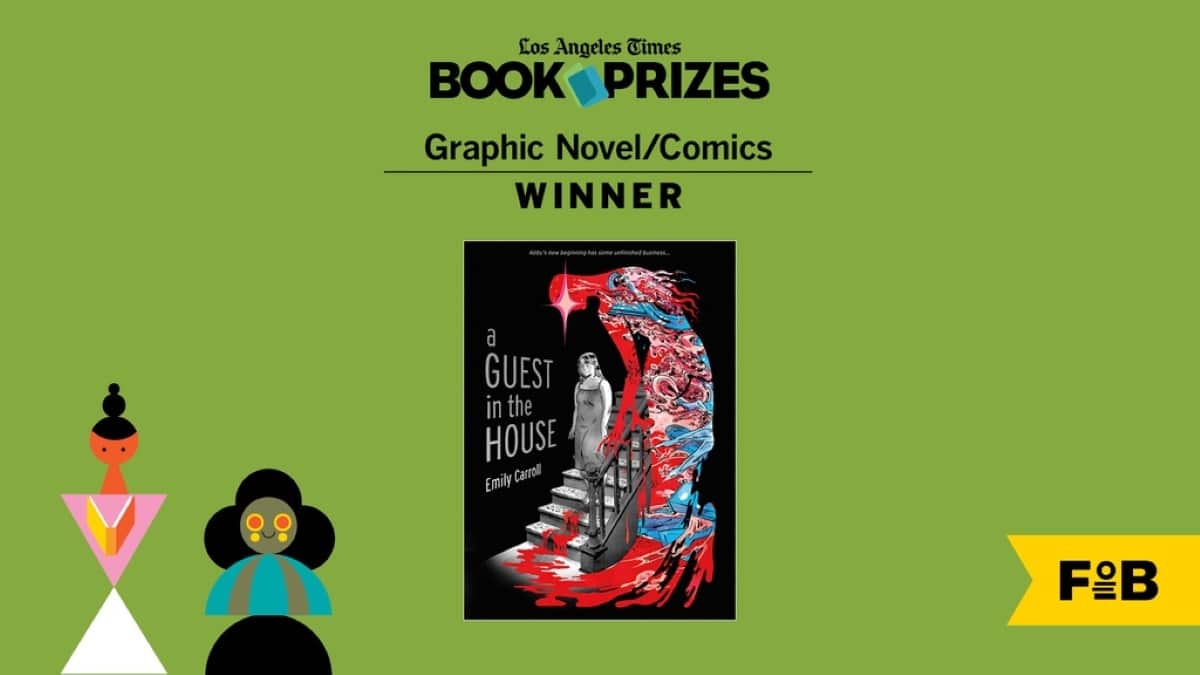By Ani Bundel
This being the 50th anniversary of San Diego Comic-Con, the event is celebrating its roots with a series of panels reminiscing about the good old days, decade by decade. The four days of the convention will cover a decade a day, starting with Thursday’s “Comic-Con In the ’70s” panel. It featured an enormous array of SDCC old-timers: Barry Alfonso, Wendy All, Maeheah Alzmann, Richard Butner, Roger Freedman, Scott Shaw, Brinke Stevens, William Stout, and Phil Yeh, with moderator Mark Evanier.
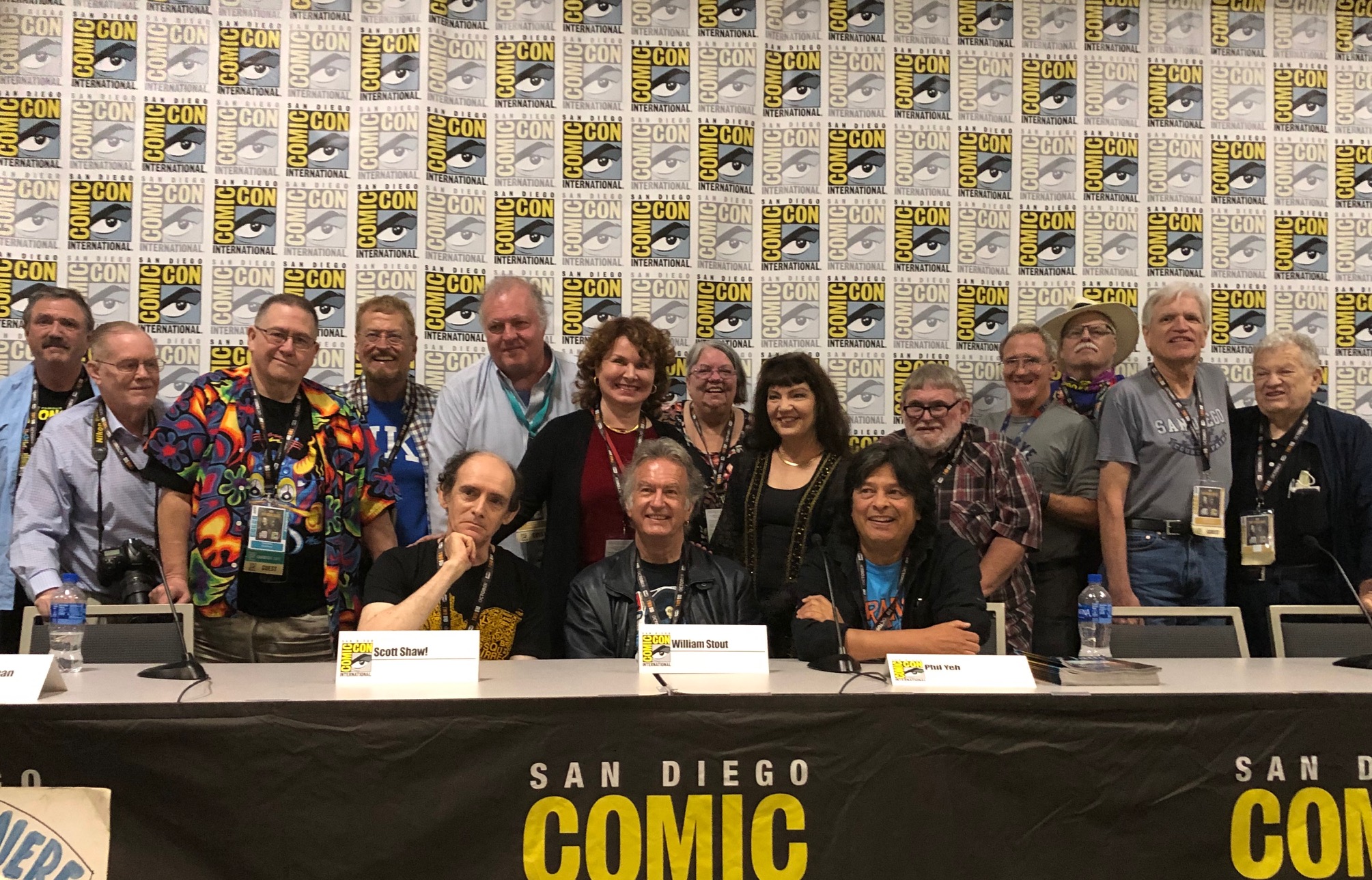
For many on the panel, getting asked to be part of (or finding themselves involved in) those early conventions was a life-changing event. Alfonso, now a producer and writer, called himself the first convention’s “kid mascot.” Stevens credits her early cosplay photos getting her work in Hollywood as an actress. It seemed like those who were lucky enough to be there when SDCC was getting off the ground had their fortunes soar with it.
But though they all personally had good fortunes come from their involvement, it was also a boon to the city as well. In the words of fantasy artist Stout, one of the first artists to appear at the first convention alongside Jack Kirby, “San Diego wouldn’t be the same without Comic-Con.”
The panel was filled with memories of early convention antics including Gonzo-like exploits that would make Hunter S. Thompson proud. However, moderator Evanier wanted those in the room to understand that underneath it all SDCC hasn’t changed that drastically. SDCC may not focus on comics like it once did, but, as he pointedly noted: “Neither does Marvel.”
From the outside, SDCC might feel like it’s about the Hall H Line and the Ballroom 20 line, but panels like “Comic-Con In The 70s” harken back to what the convention was always about. As Evanier put it, SDCC is about successful artists sharing stories, and inspiring those in the audience to do the same. Those types of panels may be smaller, but they are still just as popular, as the packed room can attest.
SDCC dazzles current convention attendees with the high-profile stars who attend. It hosts Hall H panels that fill to the brim for series like Game of Thrones, a show that is as big as SDCC is itself. But the heart of the convention has always been the people who attend. As Roger Freedman put it, the people who inspire him the most that he’s met working at SDCC are all the hundreds of thousands of attendees. They bring ideas and creativity to share. In the end, it’s us who make the event what it is and will always be.


